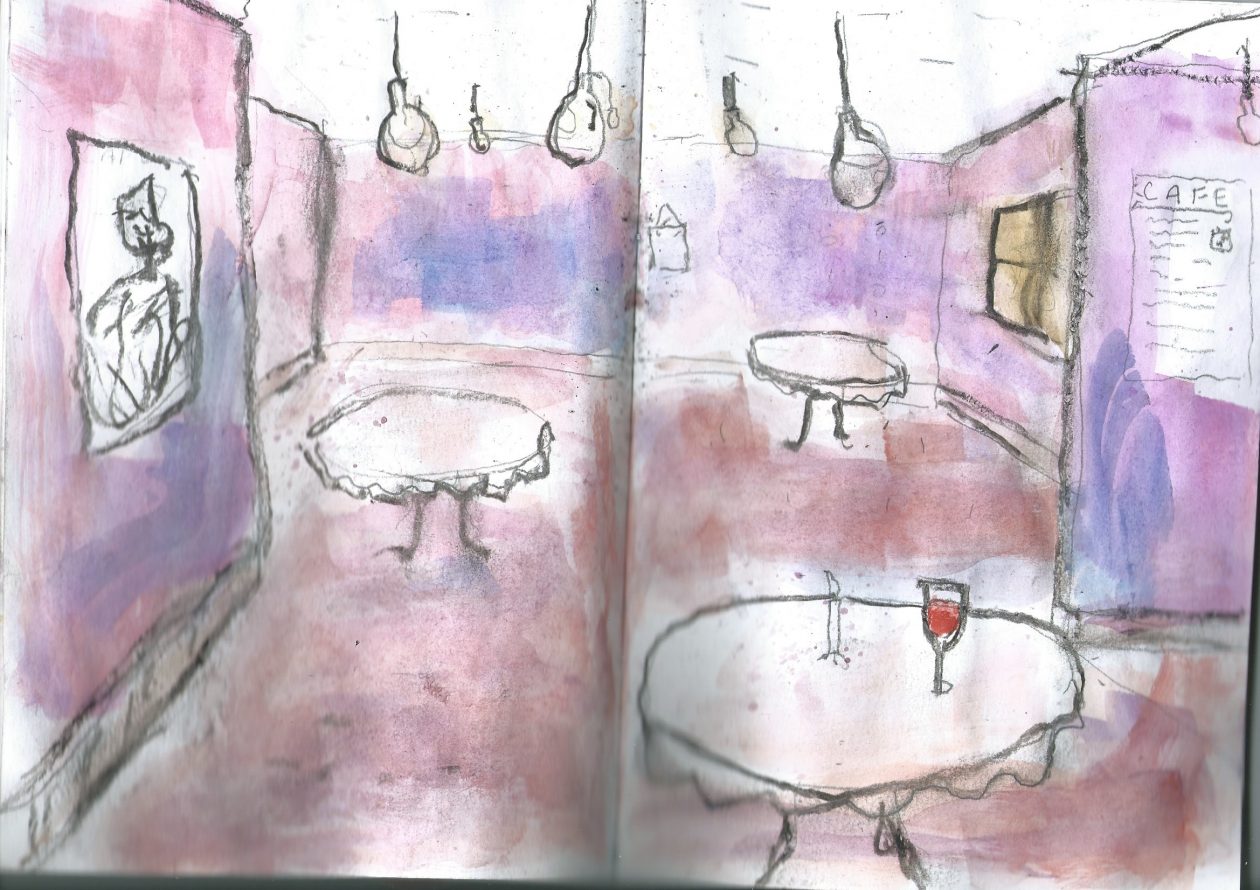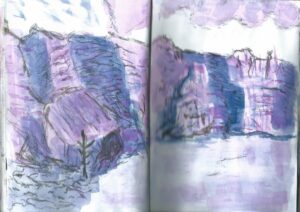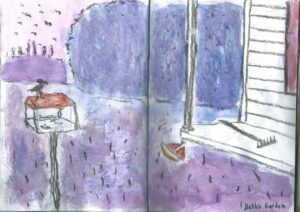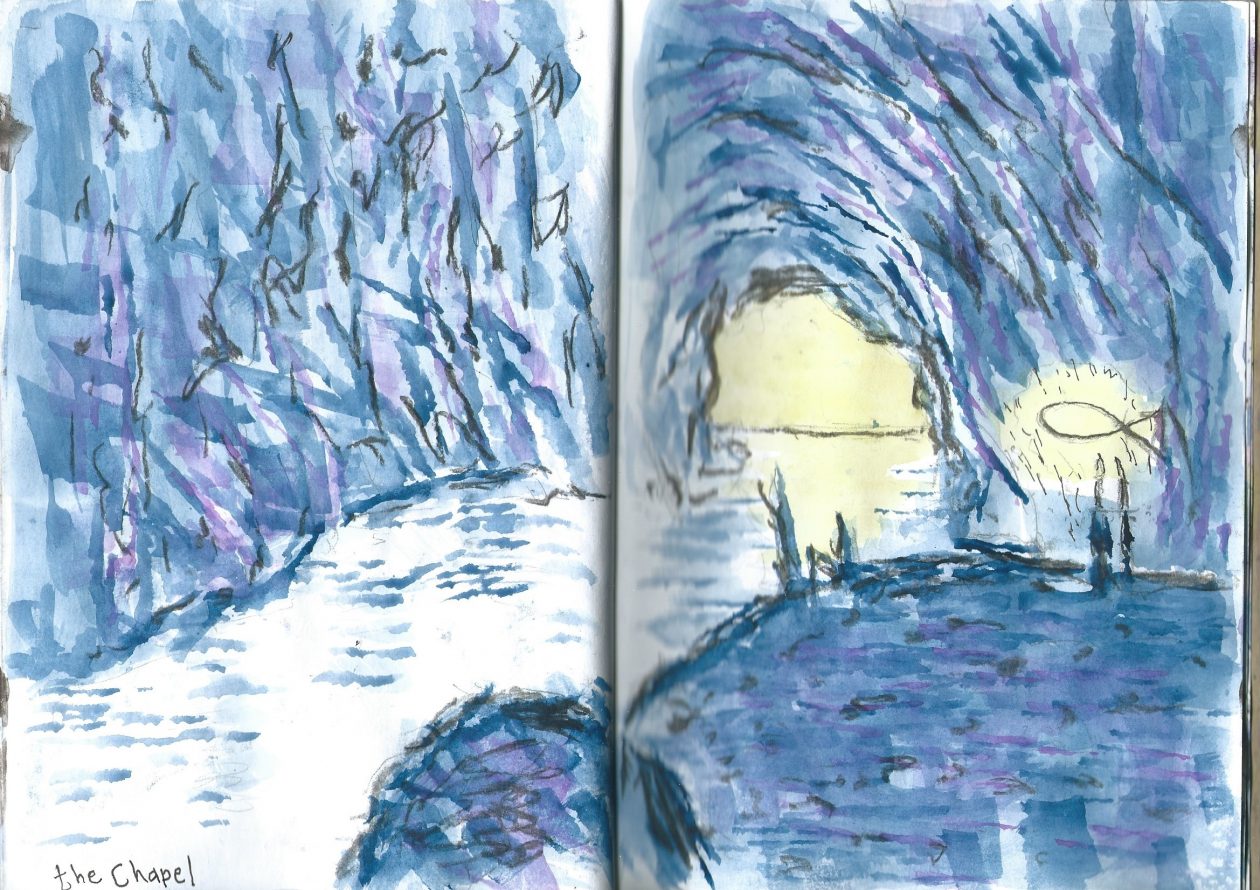
JULIA LEE BARCLAY-MORTON – YOGA, WATER AND REWRITING AUTISM
I interviewed writer Julia Lee Barclay-Morton about her experience of autism. Julia began as an experimental dramatist in New York, moving to the UK to

 Often, when I describe a location in a story, I draw on details of a place I’ve lived or visited. When I do, the images that come up are usually more like impressions from dreams than moments captured in real time. They might be slightly distorted, or blurred and selective, or they might include several locations run together – but I draw from direct experience because that way I can get closer to my subject matter.
Often, when I describe a location in a story, I draw on details of a place I’ve lived or visited. When I do, the images that come up are usually more like impressions from dreams than moments captured in real time. They might be slightly distorted, or blurred and selective, or they might include several locations run together – but I draw from direct experience because that way I can get closer to my subject matter.
However that leaves me, as a novelist, with a dilemma. If some of the details don’t match their sources then it’s better not to give away the actual place names; on the other hand, without precise locations plausibility suffers.
To give a few examples from my books:
The first novel in my trilogy, ‘Purple’, is set in the University (and City) of York – but it wasn’t until the second edition that I made that explicit. I liked the generic feel of my 1969 ‘new university’ and believed it widened the story if some readers saw their own past in it. But really I was worried that people who knew York would question the scene where my protagonist descends from the city walls through bushes to a space behind the cathedral. The actual York city walls have railings, there are gardens in the way, and the whole journey is quite impossible.
Similarly, in my second novel ‘Blue’, I initially downplayed London as the setting. I wanted to choose sights and sounds to fit the characters’ moods, and adopting a documentary approach would focus the story on externals. I didn’t want to write a tourist guide or an architectural survey. My aim was to chart the innerness of my characters, describing their hidden thoughts and feelings.
My third example comes from ‘Violet’, set in Folkestone, where my protagonists walk around cliffs and a headland to end up in a cave. In fact the cave doesn’t exist and the cliff scenery is a blend of Folkestone, Hastings and the West Country. In addition the passage contains two symbolic details: a lover’s leap and a Jesus-fish sign, both of which signpost themes in the book, and are drawn from other sources.
Location is powerful. It can change the mood of a story and allow characters to develop in ways they couldn’t elsewhere. This happens in ‘Purple’ by the seaside, in ‘Blue’ at the women-only retreat and in ‘Violet’ on the cliff walk to the cave (see below) where the real and the not-real blend and imagination takes over…
Beth leaned over, holding his arm. The rock here was sheer. Below, it opened to a thin strip of water caught between cliffs. At the sea end a huge, steeply-sloping block held out the waves. Behind it the inlet was still. Its dark, enclosed surface seemed almost lifeless. James looked up. “So what’s the story there?” he asked, pointing along a fenced-off spur. A faded sign said Danger and, beneath that, Lover’s Leap. Beth’s expression flattened. “A woman who drowned, I believe.” “You mean she jumped?” “Not exactly, the story is she climbed down to a boat.” “To escape with her lover?” “She tried.” “So what happened?” Beth shook her head. “The weather changed as they rowed out to sea, at least that’s the story, and they both drowned.” “Ah, doomed love.” “Well, romantic, anyway,” she said, shivering slightly. The wind was gusting. It came and went, funnelled by the rocks. A deep, insistent surf-noise was rising up the cliff. “But do you think it really happened?” he asked. “Probably, but then does it matter? It’s true to life, that’s all.” “You think so?” “Don’t you?” “Well, I’m not a cynic. But I do think we should take nothing for granted.” “So you don’t believe the stories?” “Of course, all lovers have to die.” Beth laughed. “But not…” she said, cutting herself off. “Or at least, it’s like that in youth,” he continued. “…trust me.” She smiled and pushed in closer, “But then sometimes… not often, but sometimes…” She paused, searching for words, “People meet and surprise-surprise, things happen.” In reply James touched her lightly. At first on her hand, saying nothing; then palm-flat, grinning, smoothing back her hair, shifting to her cheek, her shoulder and dropping to her breast, as his mouth met hers. They rocked back and forth, kissing; then repeated, in a clench. Their faces had softened and their movements slowed. They were there, together, and nothing seemed to matter. No one could see them and they touched and they kissed, searching for pleasure, simply, as it happened, and because they could.

The tide was going out when they reached the shoreline. They followed the stream, sliding on gravel. The wind now was blustery and the clouds were low. In the distance the surf was kicking up. Bare rafts of rock showed around the headland. “We can go out there,” said Beth, waving forward. A few spots of rain mixed with spray flew in from the sea. “Is that wise?” asked James, holding out his hand. “We can get round the point to the café.” “If that’s quicker.” Beth confirmed. She kissed him, once, twice and led onto the rocks. To begin with they simply stood, plotting a route, but when the cold drove them on they made their way out. Firstly on the flat and then, braced against the wind, across cracked, uneven surfaces. There were flurries now, some of them hail, driving from the sea. They called out and laughed, braving the weather. At a channel they slowed, choosing a detour, by a stack they ducked down, when they neared the headland they looked about – mostly they kept on. Reaching the point, they were absorbed by sound: the surf-roar, the wind, the seabirds crying. They were out there, alone. As they entered the next bay, Beth waved towards the cliffs: “There’s a place here,” she called, “out of the wind.” She steered to one side, closing on rock. As she pointed towards an overhang, the rain grew heavier. “This way!” she yelled, pushing on. Water filled the air. Whipped up by the wind, it soaked through their hair, beating on their backs. They scrambled for the cliffs, reaching the overhang where Beth pulled him in. “We’re here!” she shouted, and her voice echoed briefly. Suddenly it was quiet. Blinking, James looked about. They’d arrived in a short, scooped-out cave with a double-pillared entrance. It was tall and egg-shaped, and level underfoot. Along one side the rock dipped to a shadowy pool. A small vase of withered flowers stood by the poolside. Beside it a burnt-down candle had hardened onto rock. A few dead flowers had fallen into water. “What is this place?” James asked. “Does it have a name?” His voice echoed slightly in the dark. Beth hushed him. She motioned to the opposite wall where a fold in the rock acted as a seat. Beside it a squared-off stone doubled as a table. At one end, incised into rock, the stone was decorated with an Ichthys. “The Chapel,” she said quietly.

ABOUT LESLIE TATE’S BOOKS:

I interviewed writer Julia Lee Barclay-Morton about her experience of autism. Julia began as an experimental dramatist in New York, moving to the UK to

I interviewed Gillean McDougall from Glasgow, who edited the collaborative projects Honest Error (on Charles Rennie Mackintosh and his wife Margaret Macdonald) and Writing the

I interviewed French writer Delphine de Vigan, whose book, No et moi, won the prestigious Prix des libraires. Other books of hers have won a clutch

I interviewed Joanne Limburg whose poetry collection Feminismo was shortlisted for the Forward Prize for Best First Collection; another collection, Paraphernalia, was a Poetry Book Society Recommendation. Joanne

I interviewed Katherine Magnoli about The Adventures of KatGirl, her book about a wheelchair heroine, and Katherine’s journey from low self-esteem into authorial/radio success and
| Cookie | Duration | Description |
|---|---|---|
| cookielawinfo-checkbox-analytics | 11 months | This cookie is set by GDPR Cookie Consent plugin. The cookie is used to store the user consent for the cookies in the category "Analytics". |
| cookielawinfo-checkbox-functional | 11 months | The cookie is set by GDPR cookie consent to record the user consent for the cookies in the category "Functional". |
| cookielawinfo-checkbox-necessary | 11 months | This cookie is set by GDPR Cookie Consent plugin. The cookies is used to store the user consent for the cookies in the category "Necessary". |
| cookielawinfo-checkbox-others | 11 months | This cookie is set by GDPR Cookie Consent plugin. The cookie is used to store the user consent for the cookies in the category "Other. |
| cookielawinfo-checkbox-performance | 11 months | This cookie is set by GDPR Cookie Consent plugin. The cookie is used to store the user consent for the cookies in the category "Performance". |
| viewed_cookie_policy | 11 months | The cookie is set by the GDPR Cookie Consent plugin and is used to store whether or not user has consented to the use of cookies. It does not store any personal data. |
2 responses
An interesting post, Leslie. Your points about the location are well made. Lovely extract too.
It’s great to know that there are people like you, Robbie, reading these posts. I’m glad you enjoyed the extract! Sue and I read it out to audiences as a double act with Sue reading what Beth says.